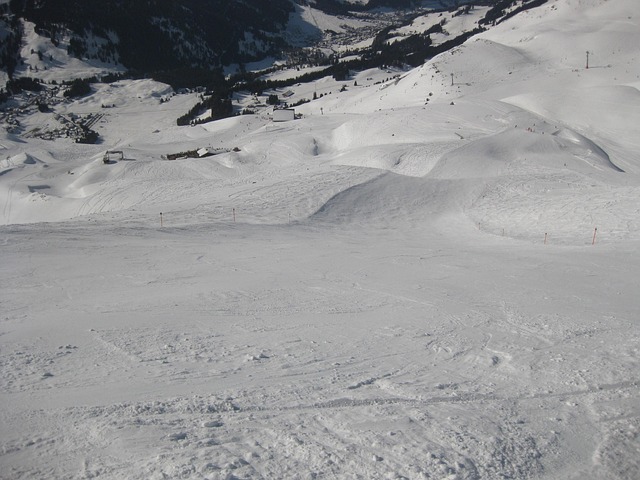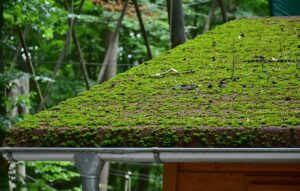Low slope roofing is a popular choice for warehouses and large commercial buildings, featuring gentle slopes under 20 degrees that offer enhanced insulation, reduced structural load, and simplified maintenance. Using specialized materials and advanced drainage systems, this roofing type ensures longevity and waterproof protection. Key materials include bitumen-based membranes, single-ply EPDM rubber, aluminum, and stainless steel metal panels. Installation requires meticulous preparation and efficient drainage systems to prevent water damage. Regular maintenance is vital for extending the roof's lifespan. The future of low slope roofing focuses on sustainability, energy efficiency, and advanced drainage technologies.
Low slope roofing, often referred to as shallow-pitched systems, is a popular choice for warehouses and large commercial buildings. This article delves into the intricacies of this roofing style, exploring its definition, key characteristics, and extensive advantages. We’ll guide you through the common materials used, step-by-step installation process, and maintenance tips for optimal longevity. Additionally, we’ll look at future trends and innovations shaping the low slope roofing industry.
- Understanding Low Slope Roofing: Definition and Key Characteristics
- Advantages of Shallow-Pitch Roof Systems in Commercial Spaces
- Common Materials Used for Low Slope Roofs
- Installation Process: Step-by-Step Guide for Warehouse Roofs
- Maintenance and Longevity: Ensuring Optimal Performance
- Future Trends and Innovations in Low Slope Roofing
Understanding Low Slope Roofing: Definition and Key Characteristics

Low slope roofing refers to a type of roofing system characterized by its gentle or shallow pitch, typically having slopes less than 20 degrees. This design is commonly found in warehouses, large commercial buildings, and other industrial structures. Unlike steep-pitched roofs, low slope roofs offer several advantages, including improved insulation efficiency, reduced load on structural elements, and easier maintenance.
Key characteristics of low slope roofing include the use of specialized materials that are designed to withstand prolonged exposure to varying weather conditions. These systems often feature advanced roof drainage systems to manage water runoff efficiently, preventing water damage and prolonging the lifespan of the roof. The sloped roof design, although gentle, is carefully engineered to ensure proper water flow away from the building, making it a practical and functional choice for commercial spaces.
Advantages of Shallow-Pitch Roof Systems in Commercial Spaces

Shallow-pitched roofing systems, often referred to as low slope roofing, offer several advantages for commercial spaces. Their design is characterized by a gentle slope, typically less than 20 degrees, which sets them apart from traditional sloped roof designs. This feature makes low pitch roofs easier and more cost-effective to install and maintain compared to steeper roofs. The reduced installation complexity translates into faster construction times and lower labor costs, making it an attractive option for large-scale commercial projects like warehouses and industrial buildings.
Moreover, the seamless integration of low slope roofing with modern roof drainage systems enhances its functional benefits. These systems efficiently manage rainwater runoff, preventing water damage and ensuring the structural integrity of the building below. By prioritizing water management, these roofs contribute to a more sustainable and environmentally friendly built environment, which is becoming increasingly important in today’s market.
Common Materials Used for Low Slope Roofs

Low slope roofing is characterized by its minimal inclines, typically less than 15 degrees, and is a prevalent choice for warehouses and large commercial buildings. The materials used in these systems are designed to withstand the demands of such structures, offering durability and cost-effectiveness. Commonly employed materials include bitumen-based membranes, which are affordable and easy to install, making them a popular option for low slope roofs. These membranes are often reinforced with fiber reinforcement for added strength and resistance to punctures and tears.
Another prevalent material is single-ply EPDM (ethylene propylene diene monomer) rubber. Known for its flexibility and long lifespan, EPDM offers superior weatherability and excellent resistance to UV degradation. It also incorporates roof drainage systems, crucial for managing water flow and preventing damage caused by ponding. In addition, metal panels, particularly aluminum and stainless steel, are used in low pitch roof designs for their durability, reflectivity, and ability to withstand harsh weather conditions.
Installation Process: Step-by-Step Guide for Warehouse Roofs

The installation process for a low slope roofing system in warehouses involves several precise steps to ensure durability and functionality. It begins with thorough preparation of the existing roof surface, including cleaning and repairing any damage. A crucial step is the application of an appropriate underlayment, designed to protect against moisture intrusion. This layer acts as a barrier between the shingles and the roof deck.
Next, the installation of the low pitch roof system commences with the placement of starter strips, followed by the careful arrangement of individual shingles or panels. Proper alignment and overlap are essential for both aesthetic appeal and water shedding efficiency. Incorporating effective roof drainage systems is vital to diverting water away from the building’s structure. This step includes installing flashing around penetrations and ensuring proper slope for optimal water flow.
Maintenance and Longevity: Ensuring Optimal Performance

Low slope roofing systems, often found in warehouses and large commercial spaces, require diligent maintenance to ensure optimal performance and longevity. Unlike sloped roofs with steeper angles, low pitch roofs present unique challenges when it comes to drainage. Effective roof drainage systems are crucial for preventing water accumulation, which can lead to structural damage over time. Regular inspections should be conducted to identify and address any leaks or blockages promptly.
Proper maintenance includes regular cleaning to remove debris that could obstruct the flow of water, as well as reapplication of sealants and coatings to protect against weathering. By prioritizing these tasks, building owners can maximize the lifespan of their low slope roofing, ensuring a secure and efficient space for years to come.
Future Trends and Innovations in Low Slope Roofing

The future of low slope roofing is poised for exciting developments as industries strive to meet evolving demands and environmental considerations. One prominent trend is the increasing adoption of green roofing solutions, which involve integrating vegetation into the roof structure to enhance energy efficiency and reduce the urban heat island effect. This approach aligns with the growing emphasis on sustainable building practices. Additionally, advancements in materials science are leading to lighter and more durable low slope roofing membranes, promising improved structural integrity and longer lifespans.
Innovations in roof drainage systems are another critical area of focus. With the rise of larger and more complex commercial spaces, efficient water management has become imperative. New technologies aim to streamline drainage processes, preventing water damage and prolonging the overall lifespan of low pitch roofs. These developments not only ensure structural integrity but also contribute to the overall cost-effectiveness and longevity of commercial buildings, addressing both practical and environmental concerns in the process.
